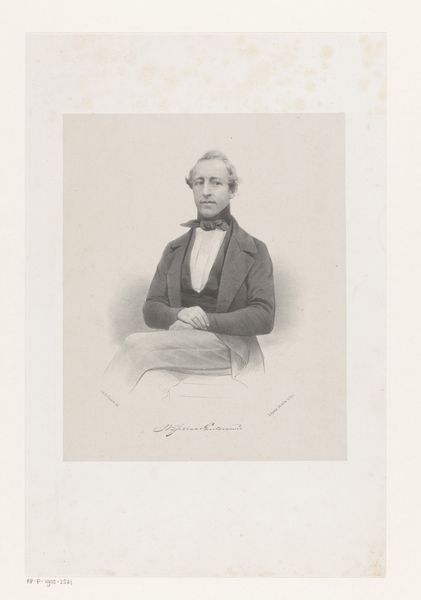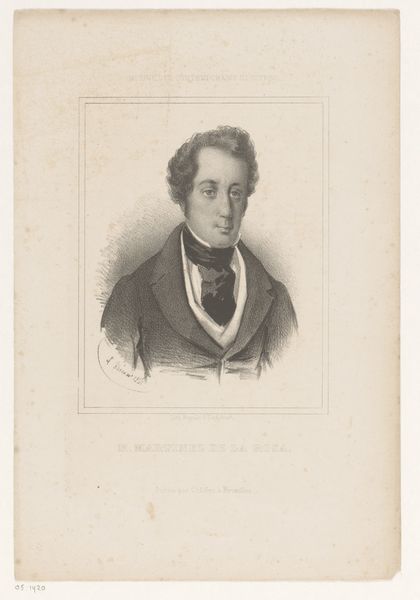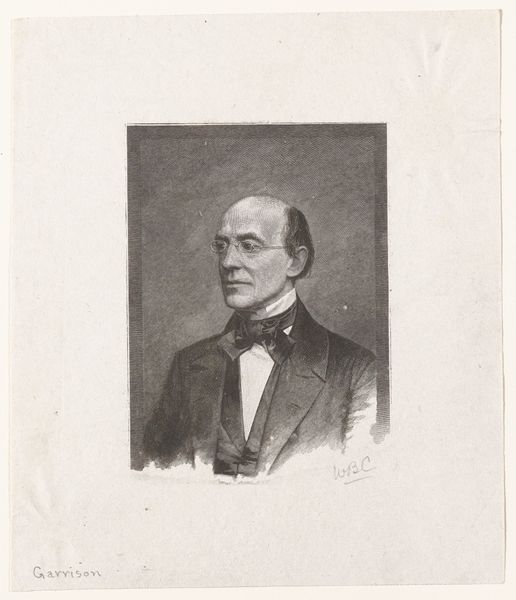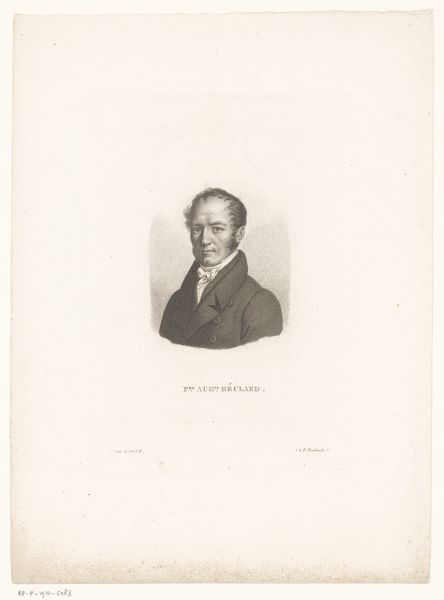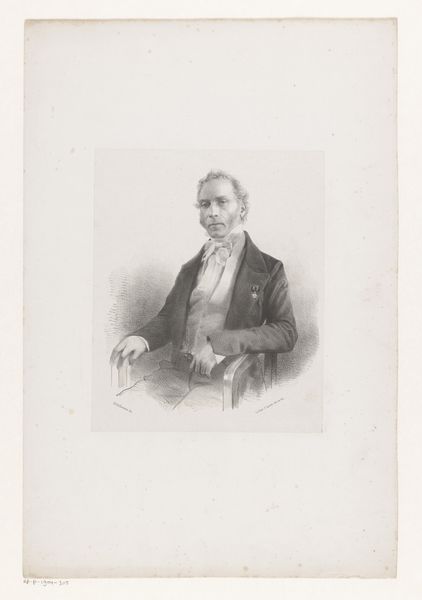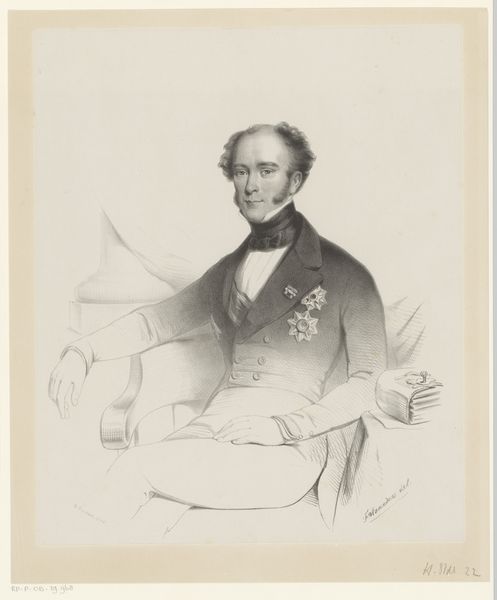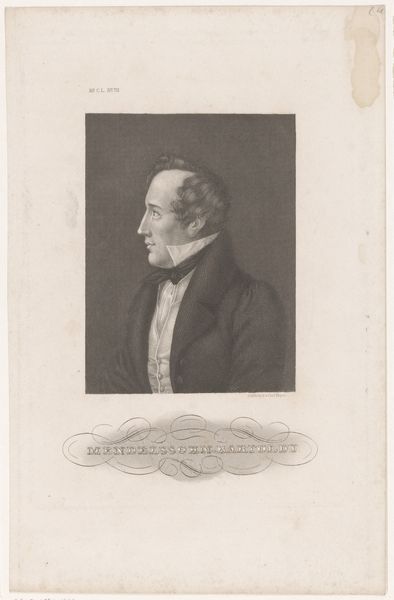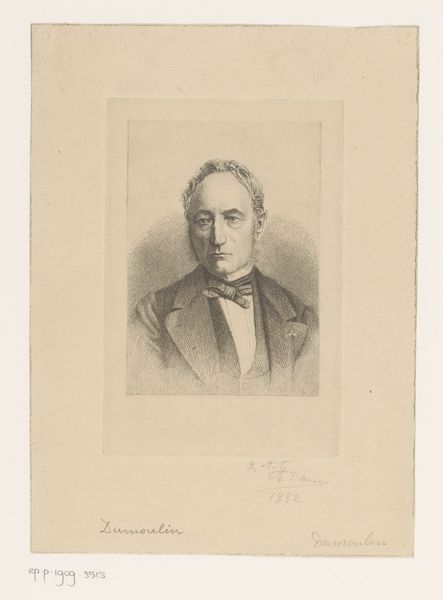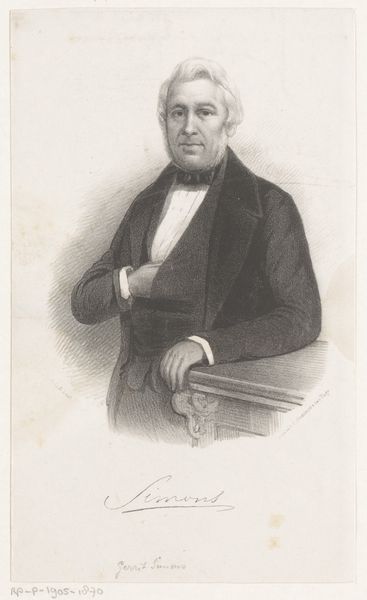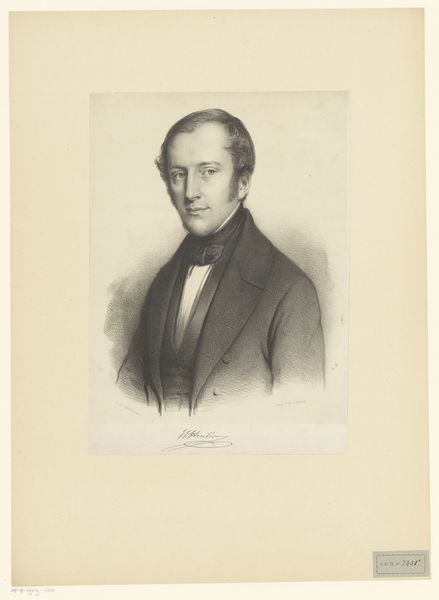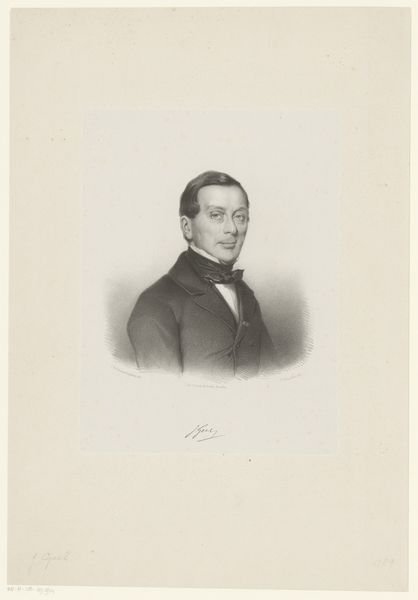
Dimensions: height 245 mm, width 160 mm
Copyright: Rijks Museum: Open Domain
Curator: Welcome. Here we have "Portret van de graaf van Clarendon," or "Portrait of the Earl of Clarendon," dating somewhere between 1842 and 1887. This intriguing work, crafted with pencil, resides here at the Rijksmuseum. Editor: What immediately strikes me is the sheer confidence conveyed through the use of line. Look at the assertive contouring of the jawline and the meticulous detailing of his coat—formidable. Curator: Indeed. Considering its creation during the 19th century, likely reproduced as an etching, we can see how images such as these helped circulate aristocratic personas within broader social and political circles. It wasn’t simply about likeness but propagating influence. Editor: Precisely. Notice how the artist skillfully uses hatching and cross-hatching to create volume and depth. The way the light catches his brow and the folds of his jacket speaks to the artist’s mastery of technique. Semiotics come to mind when analyzing details like the bowtie as conveying specific messages about social status. Curator: Also worth noting the labor and production involved in creating and disseminating prints at this scale. Someone would’ve had to produce each drawing; engravers, printers, publishers all played significant roles in mediating images. That shapes who and what were seen! Editor: Yes, I agree; it prompts thinking of how this artwork participates within established aesthetic norms. There's something powerful here about the artistic vocabulary being used and understood universally back then; his image clearly marks nobility and sophistication using a universally recognizable visual language. Curator: A language deliberately manufactured to solidify certain narratives. These portraits served very precise political functions during a period defined by rising social inequality and power imbalances! How an Earl wants to be perceived really. Editor: I concede the deliberate construct. But observing this interplay—line, shadow, aristocratic air, historical context—adds richness to this silent composition. Curator: Agreed. Reflecting upon both material reality and artistic intent adds depth and breadth to this portrait, illuminating 19th-century social constructs of class. Editor: In totality, a single image revealing complexity of process, social messaging and aesthetic language simultaneously.
Comments
No comments
Be the first to comment and join the conversation on the ultimate creative platform.
